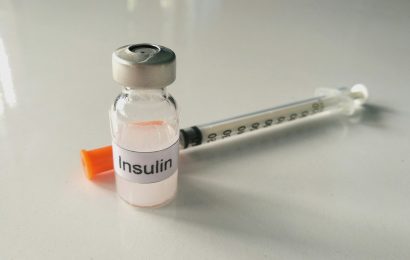You probably know about Type 1 and Type 2 diabetes. You may or may not have heard of other types. But do these names help? Some believe the labels interfere with getting the best treatment and should be changed.
What do Types 1 and 2 and the other types mean? For decades, Type 1 diabetes was called “juvenile diabetes.” People got it young. Some did develop Type 1 as adults, but this was not usually recognized.
Type 2 was called “adult-onset diabetes.” It used to be a disease exclusively of older people, especially less physically active ones. Now it’s rampant through our society and much of the world, and some people get it as children.
Type 1 also used to be called “insulin-dependent diabetes.” People with Type 1 make very little or no insulin, and without injected insulin they would die.
Type 2 was called “non-insulin-dependent diabetes,” because people with Type 2 continue to make some insulin for years after diagnosis. But now people with Type 2 frequently start insulin at diagnosis.
Type 1 has long been thought of as a disease of low insulin production, while Type 2 was a disease of insulin resistance. According to diabetologist Stanley Schwartz, MD, this distinction is not helpful. Schwartz and colleagues believe ALL diabetes is a result of damage to beta cells, the cells that produce insulin.
According to this theory, insulin resistance just uncovers the basic deficiency in insulin production. Only one third of people with insulin resistance go on to develop diabetes.
So the differences between Type 1 and Type 2 are no longer clear. To add to the confusion, many people have other types of diabetes. One is called LADA, or latent autoimmune diabetes of adults. LADA is something like a slow-moving Type 1, but it also includes elements of Type 2. LADA is often called Type 1.5, but it is somewhat different from either type.
Another set of types of diabetes is called MODY, or maturity-onset diabetes of the young. MODY is a form of monogenic diabetes caused by a variety of defective genes that impair insulin output. You can read about MODY and some other types in this article.
Each of these types presents differently in different people, and so treatment should be as individual as possible. Dr. Schwartz says, “It doesn’t matter which label is applied. Treat as needed to get the best [glucose] control.”
Social differences between types
Important differences remain between types. Socially, people classed as Type 2 are often blamed for their illness. In the popular view, they “did it to themselves” with overeating and too much sitting around. They are not deserving of sympathy or support. None of these prejudices are scientifically true, but they are popular.
Type 2 has become the new face of diabetes. The public has forgotten Type 1 and lumps them all together, so people with Type 1 are often blamed for their illness, too.
People closer to the Type 2 end of the spectrum usually have other metabolic problems along with high blood sugar levels. They may have high blood pressure and LDL (“bad”) cholesterol, so may actually have worse health than well-controlled people with Type 1.
Those with MODY and LADA may have serious problems getting diagnosed or finding a doctor who understands their condition. Even finding someone who has heard of LADA or MODY may take some searching.
Misdiagnosis
Dr. Schwartz wants all people with diabetes to be treated as individual patients, but many doctors treat a diagnosis instead of a person. So a wrong diagnosis can cause great harm.
Frequently, Type 1 is missed because a person is older at onset, or he’s a bit heavy. Despite high glucose levels, these people are denied insulin because they “must be Type 2.” People with LADA who could really use insulin may not get it because their condition doesn’t fit a pattern that doctors are used to seeing.
Meanwhile, people diagnosed Type 1 are often treated only with insulin and denied other drugs that could help. Dr. Schwartz thinks incretin drugs and SGLT-2 inhibitors are often good for Type 1s but are rarely prescribed for them.
Dr. Schwartz is a big fan of drug therapies, especially newer, patented, more expensive ones. He consults with several drug companies. That connection should be taken into account, but he could still be right about diabetes classification.
Schwartz believes all diabetes comes from beta-cell damage. So we should class diabetes types by the causes of that damage. Then doctors will know how to treat it.
He calls his system “beta-cell centric classification.” Beta-cell damage can be caused by inflammation, immune action, high fatty acids, high glucose levels, genetics, or other causes. Schwartz believes a classification system based on these causes will lead to better treatment. We can treat the causes, not just try to knock down the glucose level.
What do you think? Does being labeled as “Type 1” or “Type 2” or “LADA” work for you? How has your label helped you, and how has it possibly interfered with your treatment or your life?





